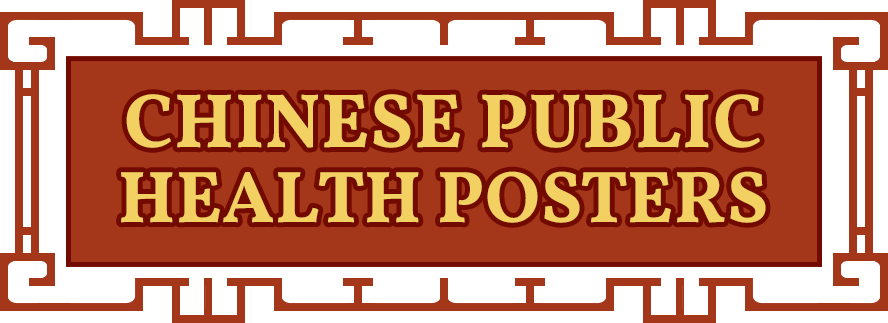Disseminating Health Knowledge: Public Health Campaigns in 20th-Century China
Lesson 5: Children’s Hygiene Education, 1930s and 1950s–1980s
Children’s hygiene education was part of the health education movement under both the Nationalist and the Communist governments. In 1929, a central “School Hygiene Committee” was established under the auspices of the Ministry of Health and the Ministry of Education. School hygiene education gradually became standardized in elementary and secondary schools in the cities. The term “health education” also became commonly used as increasing numbers of health educational institutions were established and health education teachers trained in the 1920s—1930s. Children’s hygiene posters appeared in the health campaigns in the 1930s and throughout the 1950s—1980s. These visual health materials were clear and gentle in presentation. They promoted the development of healthy behavior, namely, love of cleanliness, exercise, fresh air, vaccination, no spitting, washing hands and keeping utensils clean. The images also encouraged the training of good moral character of the young, such as being diligent and helpful to others, and being honest and brave to admit mistakes.
Images:
- 种卡介苗 (Get the BCG Inoculation), Shanghai Municipal Tuberculosis Center Prevention Office, ca. 1960
- 刷牙洗手 (Brush your teeth every morning and evening; wash your hands before eating and after using the toilet), Lanzhou Municipal Sanitation and Disease Prevention Station, October 1964
- 灑掃: 地板門窗洗刷仔细, 椅脚桌底亦须擦洗 (Keep the room clean: to sprinkle and sweep), Ministry of Education, ca. 1935
- 我咳嗽, 打噴嚏時, 用手帕掩口鼻; 我有痰, 要吐在痰盂裏 (I cover my mouth when I cough, and I spit into spittoon), New China Children’s Hygiene Habits Map, Shanghai New Asia Bookstore, painted by Li Qingsong (李清悚) and Zhang Lingtao (張令濤), ca. 1950
Primary Sources
- Iammarino, Nicholas K. “Glimpses of Health Programs in the People’s Republic of China: Health Education in Schools.” Journal of School Health 53.2 (February 1983): 104–106.
- Yip, Ka-che. Health and National Reconstruction in Nationalist China: The Development of Modern Health Services, 1928–1937. Ann Arbor, MI: Association for Asian Studies, Inc. 1995, pp. 124–131.
Online Visual Material for Class Use
- National Library of Medicine. XXXX. “Child Health Education” in Chinese Public Health Posters. https://www.nlm.nih.gov/hmd/chineseposters/images/1200/DSC_4075.jpg
- --------. XXXX. “Hygiene and Sanitation” in Chinese Public Health Posters. https://www.nlm.nih.gov/hmd/topics/chinese-posters/gallery.html#case2
- --------. XXXX. “Vaccines” in Chinese Public Health Posters. https://www.nlm.nih.gov/hmd/topics/chinese-posters/gallery.html#case4
Discussion Questions
- What were the common themes of the children’s hygiene education in the 1930s and the 1950s-1980s? Any significant differences between the two periods? Why?
- Do you think visual storytelling is an effective way to teach children about health issues? Why or why not?
- Why was children’s health education important in China? Is it important for any society?
- In these Chinese visual images, what good moral values were taught to the children besides good health behavior? Do you find the same in your own country’s health education for children?

